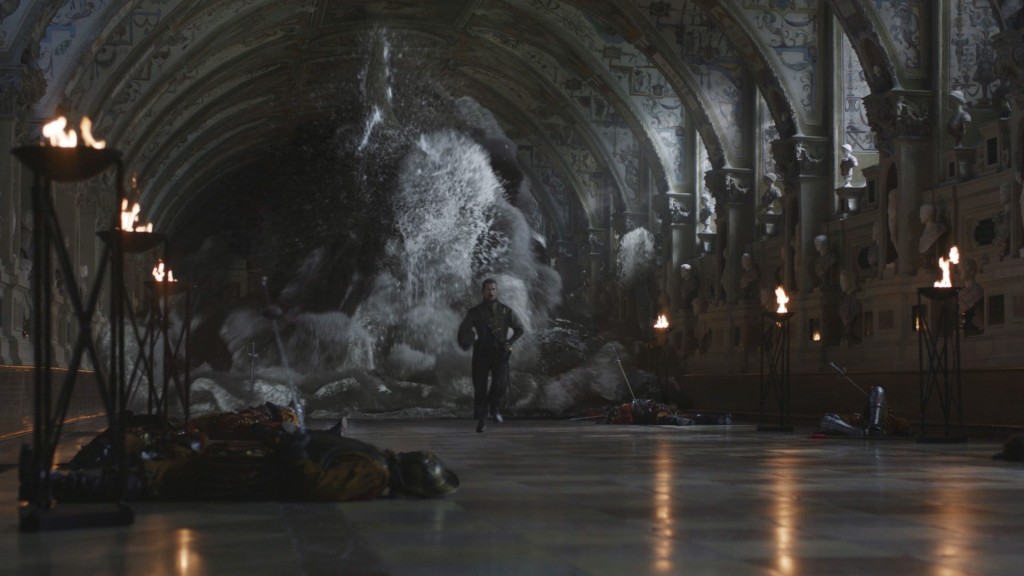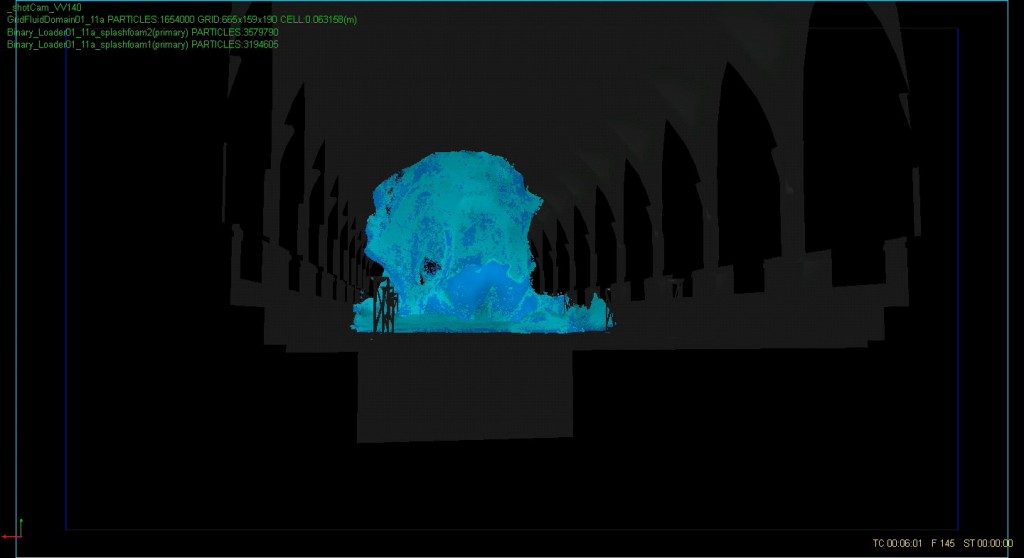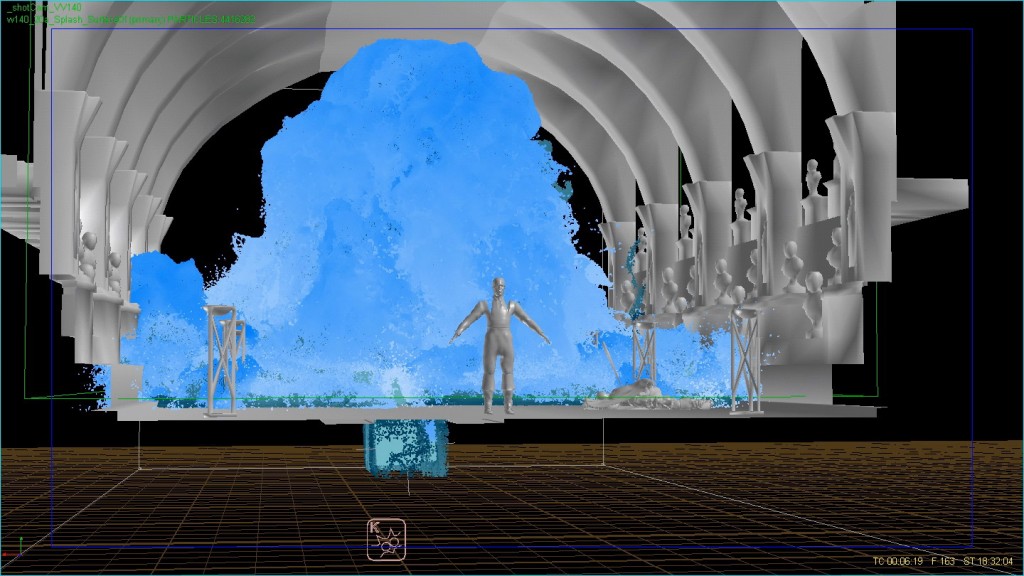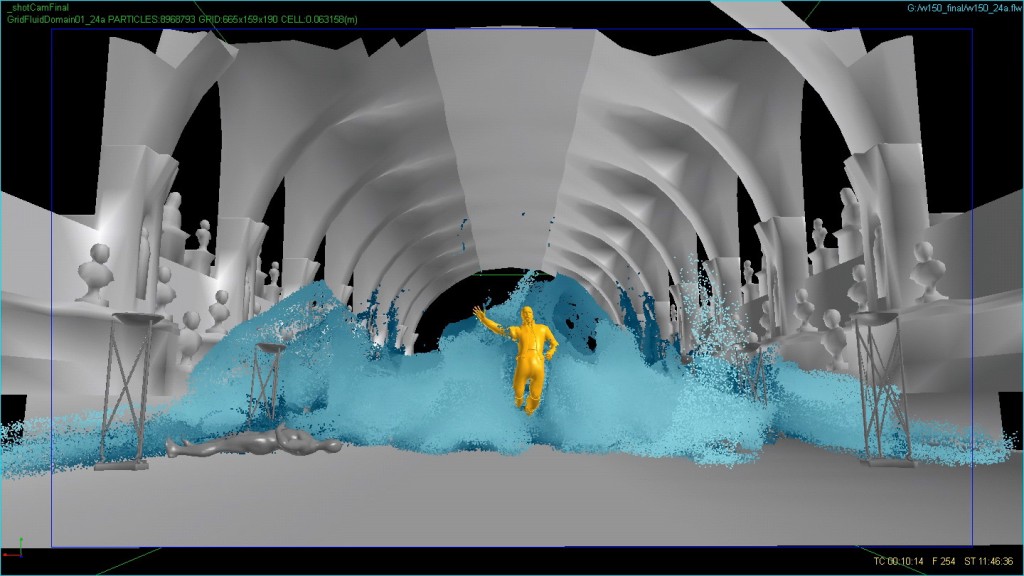Inside the Ooze
 Conjuring up gooey blood-like fluid dripping and splashing off a stunningly-cool dragon, melting Rooney Mara’s head into an oozing mass and ripping Daniel Craig’s head apart in a violent blood spatter are the rare opportunities that every fluid fx artist dreams of. So when Blur Studio asked for Fusion’s cg fluids expertise in David Fincher’s ground-breaking title sequence for The Girl With The Dragon Tattoo, there was no shortage of ‘woops’ from the team. When one of Fusion’s artists, Matthew Benson, got assigned the shot where Blomqvist’s head gets ripped to pieces, his response said it all: “You mean I get to crush James Bond’s head? Right oooon!”
Conjuring up gooey blood-like fluid dripping and splashing off a stunningly-cool dragon, melting Rooney Mara’s head into an oozing mass and ripping Daniel Craig’s head apart in a violent blood spatter are the rare opportunities that every fluid fx artist dreams of. So when Blur Studio asked for Fusion’s cg fluids expertise in David Fincher’s ground-breaking title sequence for The Girl With The Dragon Tattoo, there was no shortage of ‘woops’ from the team. When one of Fusion’s artists, Matthew Benson, got assigned the shot where Blomqvist’s head gets ripped to pieces, his response said it all: “You mean I get to crush James Bond’s head? Right oooon!”
Of course the usual pre-project excitement was quickly followed by the sobering reality of actually having to execute creative director, Tim Miller’s unprecedented vision — the fluid sims had to work with Blur’s meticulously beautiful, but violently-moving character animation, so the fluids had to be tightly controlled while maintaining a natural behavior, and just about all the shots were extreme close-ups — the “ECU” being the typical nightmare scenario when it comes to cg fluids. And of course there were the usual sort of technical challenges, which really turn Fusion VFX Supervisor, Mark Stasiuk’s crank…. in a good way. The fluid elements would be created with RealFlow, as it provides a stable, high-speed fluid solver that allows the user to integrate custom controls and outputs data in a format that is so standardized that virtually any vfx studio’s pipeline can take in without batting an eyelash. Even so, Mark would have to develop custom behavior technology to make the fluids look & behave the way Miller and Fincher envisioned.
The “headrip” shots were the goriest, so definitely an effects artist favorite — check out the playblast below from one of the early versions where things got just a little… shall we say, “enthusiastic.” Getting this spectacular blast of gorgeous liquid splatter ‘out of our system’ was important so we could zero in on what would work best for the sequence.
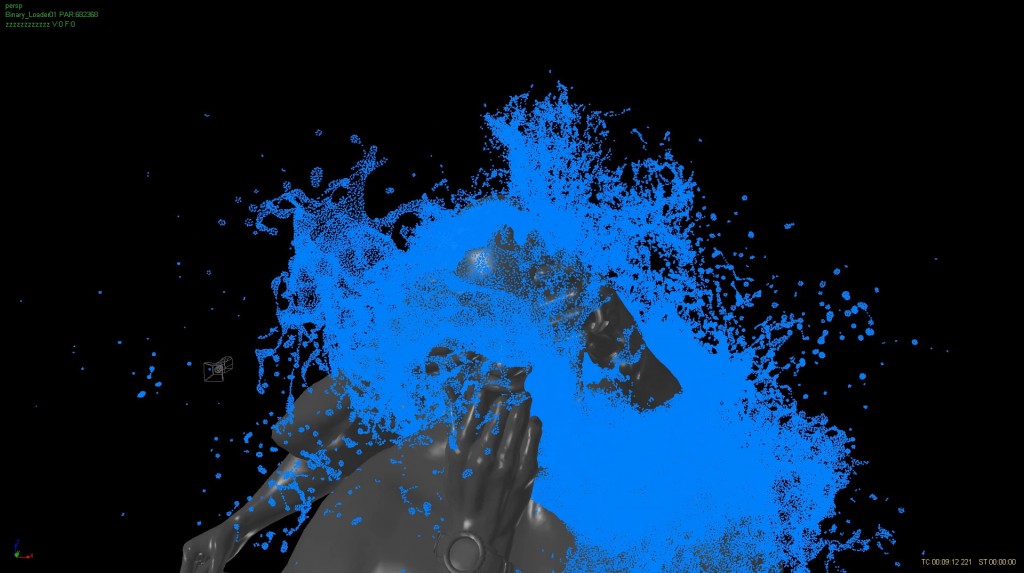 movie: http://www.fusioncis.com/press/gwdt/headrip.mov
movie: http://www.fusioncis.com/press/gwdt/headrip.mov
Mark’s favorites were the shots called “hothands” and dripsOnDragon”, because they involved a lot of new and interesting fluid behavior development.
For the dripsOnDragon shots, Fusion had to complete the apparently simple task of getting the dragon wet, as it had just emerged from Salander’s back. The fluid was to be dripping down and flinging off the dragon. Making the dragon’s geo wet was fairly straightforward because Fusion had developed a “wetting” technology for past projects that creates SPH fluid particles in an even coating on parts of geometry selected by an artist. In this case, we married the wetting technology with Fusion’s “smorganic” tool suite, while adapting smorganic so the wetting fluid would inherit the motion of the specific part of the geometry it was closest to. More on Fusion’s “smorganic” technology here: http://www.fusioncis.com/pr_smorganic.html
Normally if you throw fluid on some geometry and then start the part of the sim where the geo moves, the fluid will just fall off. In this case, we needed the fluid to inherit the geo’s motion for some short period of time and then be released, allowing it to be flung and so develop a more exciting performance. Two of the nicest examples of this are sims done for a shot focusing on the dragon’s head:
Fluid off dragon’s head:
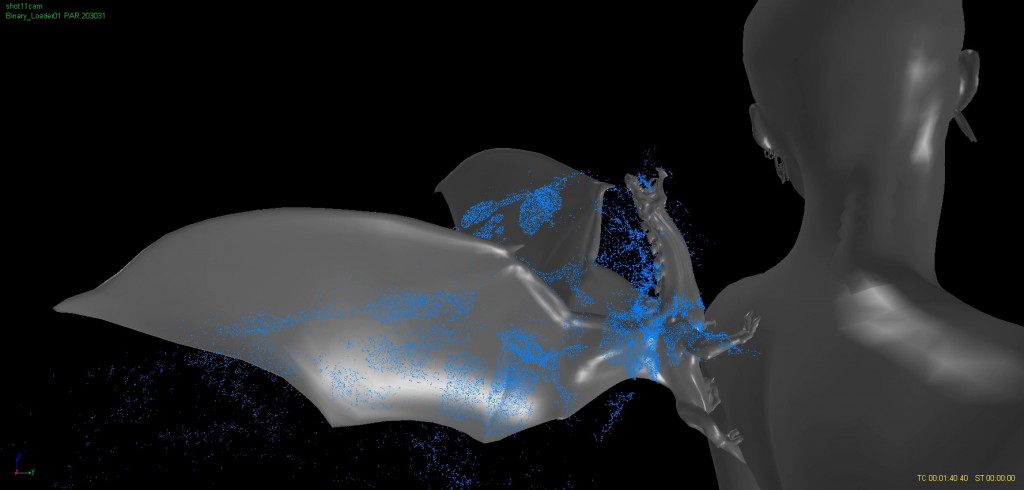 movie: http://www.fusioncis.com/press/gwdt/dripsOnDragon_head.mov
movie: http://www.fusioncis.com/press/gwdt/dripsOnDragon_head.mov
And off the dragon’s wing:
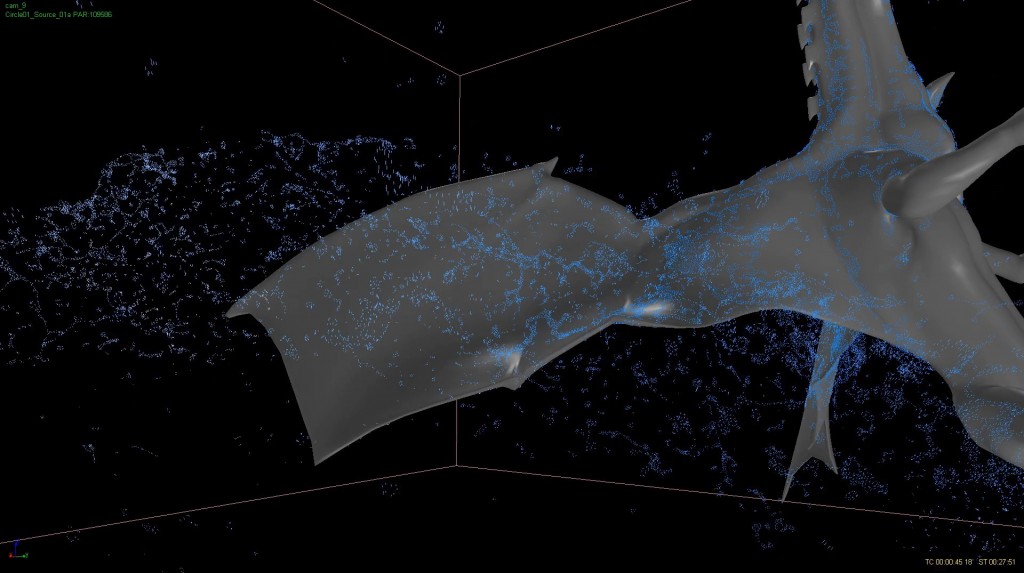 movie: http://www.fusioncis.com/press/gwdt/dripsOnDragon_wing.mov
movie: http://www.fusioncis.com/press/gwdt/dripsOnDragon_wing.mov
For both of these you can see how the initial inheritance of the geometry’s motion near each bit of fluid gives the overall fluid behavior a much more interesting and performance-connected feel. Add to that a subtle application of smorganic to allow droplets of fluid to elongate slightly, and you get both interesting behavior, and interesting, widely variable fluid shapes instead of just swarms of individual fluid beads.
In the case of the “hothands” shots, we needed a few entirely new technologies to get the shot done the way Mark wanted it to work. In these shots a set of hands converge on Salander’s head, and then start grasping at her face. But when the hands meet her face, it’s like the fingers are hot iron and her face is wax, so the fingers sink in and her face melts and surges upward slightly, squeezing between the fingers.
To do this, we had to create a semi-fluid version of Salander’s head by filling the animated head geo with fluid in RealFlow, and then used a targeting Python script that moved the mass of fluid with the Salander head’s motion. Fluid continued to move with the head until it was “melted”. Melting happened initially thru direct contact with any of the hands, and after that the heat effect was conducted thru the fluid using a proxy parameter for a random-walk diffusion. Once fluid was melted, a time-varying vertical force was applied to surge or gurgle it up thru the fingers, before letting it be pulled back down by gravity. In order to keep the fluid silky smooth, we also applied smorganic. The fluid sim results for the whole length of the animation are shown here with the hands visible:
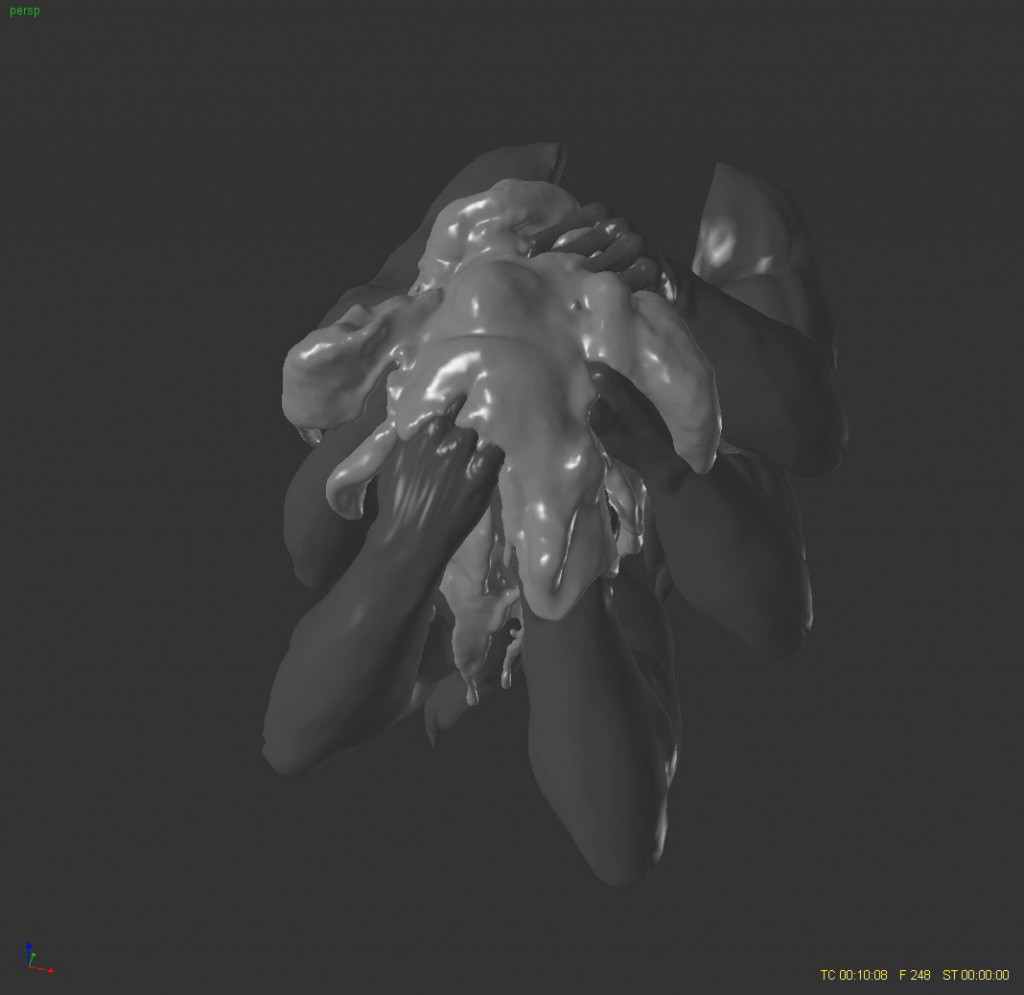 movie: http://www.fusioncis.com/press/gwdt/hothands_WithHands.mov
movie: http://www.fusioncis.com/press/gwdt/hothands_WithHands.mov
And with the hands hidden:
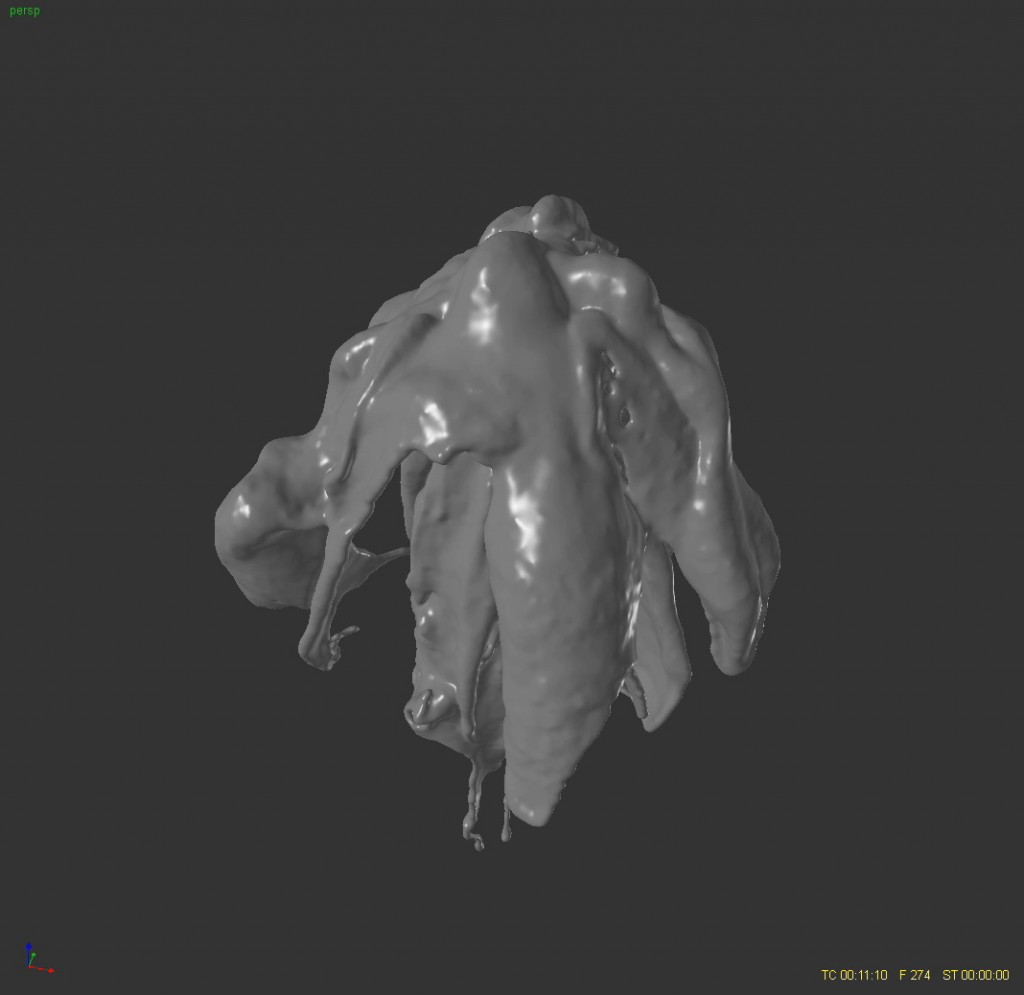 movie: http://www.fusioncis.com/press/gwdt/hothands_NoHands.mov
movie: http://www.fusioncis.com/press/gwdt/hothands_NoHands.mov
And finally from one of the close-up shot cameras:

 movie: http://www.fusioncis.com/press/gwdt/hothands_cam10.mov
movie: http://www.fusioncis.com/press/gwdt/hothands_cam10.mov
As with most of Fusion’s fluids work, we relied heavily on the capabilities of RealFlow. The tightly integrated scripting control is a fundamental feature that allows us to achieve specific behaviors and take our fluid effects to a higher level even on short production schedules. When combining RealFlow’s native capabilities with Fusion’s custom plug-ins, and high-quality vfx like Blur’s gorgeous modeling, animation, lighting and virtual camera work, you get a magic formula for outstanding visuals like The Girl With The Dragon Tattoo title sequence! http://www.youtube.com/watch?v=tcp9Ysi75f0
